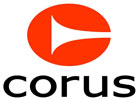| Deltaribs - unprecedented freedom of structural shapes | Home > Deltaribs fabrication |
|
Fabrication |
||||||||||||||
| The fabrication is driven by the structure's 3D model, which is generated from a network of curves that is based on architectural as well as structural inputs. From the model, unrolled cutting patterns for each sheet are extracted, which are then cut using computer-controlled (laser)cutting. Since the steel sheets are all constant cylindrically or constant conically curved, they can be produced with conventional rolling equipment. |  Three dimensional engineering. |
 |
| Cutting patterns for the curved sides nested on a steel plate for laser cutting, by Corus Feijen. |
 | |
| Construction of a
Deltarib. |
Fabrication and assembly of the ribs was succesfully tested by three prototypes. After completion the geometry of the prototypes was measured with a total station. Results showed that dimensions of the ribs themselves are highly accurate, while care should be given to the correct positioning when connecting ribs to each other. The prototypes have been built in collaboration with, and were sponsored by Corus, Kersten Europe and Delft University of Technology.
 |
 |
 |
Copyright 2011 Martijn Veltkamp, MoreThanStructures. All rights reserved. Contact.